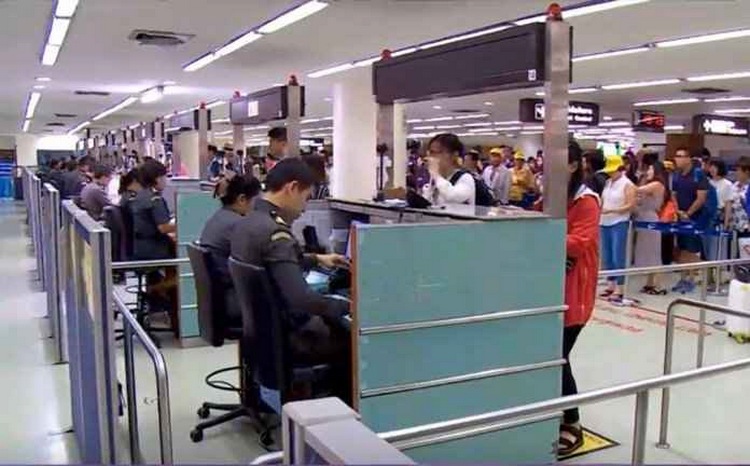
The Ministry of Tourism and Sports has announced that all foreign passport holders will need to fill in a pre-departure online TM6 form starting in May. The main reason is likely the introduction of 60 days visa exempt for umpteen millions of tourists which began last July. They can just turn up at the airport or border post without any documentation, a move which critics say is an open invitation to wannabe criminals (notably Chinese) of one sort or another. Presumably the computerized form, not yet available, will ask for Thai address details as well as passport-related information.
The Ministry says that the online TM6 – a replacement for the old manual landing card which was suspended years ago because of the impossible-to-read scribbled writing, is not a visa but just an information card. Immigration officials at airports and borders can still access via their installed computers an individual’s travel history, and whether he or she is banned and/or has a previous conviction or is wanted by Interpol. The new part is a statement by the traveller of his or her local address in Thailand. How all this affects other address-related bureaucracies post-arrival, such as TM30 (in theory completed by the hotel or house master) and TM47 (the 90 days report) still remains up in the air.
But the Ministry wants all foreigners, not just the visa exempts, to complete the TM6 computerized form prior to arrival. This is likely to produce some head scratching. Many expats have already provided details of their Thai address to local immigration, including documentary proof such as rental contracts or condominium unit ownership or a blue/yellow house book. But they now find themselves having to duplicate that information if they leave the country and return. A separate issue are the Destination Thailand Visa holders who are in the digital nomad category: many frequently change their address as they are neither retired and settled, nor workers earning money within Thailand.
Apparently, there are further entry procedures under review. An ETA or Electronic Travel Authorization as well as a form to collect 300 baht tourist tax are still being mulled over, even though government publicity last year claimed they would be in force, or at any rate on pilot, by January 2025. It is small wonder that many visitors to Thailand are befuddled by the ongoing confusion, mostly created by the Ministry of Foreign Affairs (in charge of embassies and entry rules) and not by the Immigration Bureau (in charge of processing and monitoring arrivals).
Whilst neighboring Cambodia has about a quarter of the number of visitors to Thailand, she has an entry system which appears simpler and more comprehensive. Most arrivals have applied online for an e-visa and/or be required to obtain one at the airport or border. The required details include a Cambodian address and phone number. If an individual stays longer than 30 days, to apply for an extension or to take advantage of a variety of longstay permits, he or she must ensure inclusion on the computerized data base Foreigner Present in Cambodia System or FPCS. The app must be updated every time the visitor moves home internally. Not a perfect system by any means, but at least it doesn’t spread confusion and disenchantment about the host country. Those concerns are all too obvious in the Land of Smiles.










